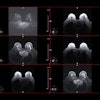
Incentives are needed to promote greater diversity and the inclusion of women among radiologist researchers, according to a study published online June 13 in Academic Radiology.
Why is diversity in radiology research important? Because it improves the field, according to a team led by Dr. Andrew Rosenkrantz of NYU Langone Medical Center.
"Promoting greater diversity and inclusion among radiologist investigators is important for promoting the breadth and depth of such research," the group wrote.
Although gender disparities in radiology practice have been more scrutinized of late, disparities in radiology research and publication have not been tracked as closely, according to Rosenkrantz and colleagues. To investigate challenges to radiology research and publication for women in radiology, they sent an electronic survey to 280 members of the American Association for Women Radiologists in September and October of 2017.
The researchers received 89 surveys, for a response rate of 31.8%. Of the survey respondents, 61.4% indicated they were interested in conducting radiology research and 60.2% stated their departments expected them to do so. However, 80.7% of respondents also noted that their departments expected them to conduct educational activities.
The authors also found the following:
- 56.8% of survey respondents felt their research success was valued by their department.
- 47.7% felt they received appropriate credit for their research.
- 41.6% had ever had a female research mentor.
- 23.9% believed that their department makes deliberate efforts to support women's research.
- 22.7% felt they received sufficient time for research.
In a free-response section, participants listed family or child care issues, unconscious bias at the department or chair level, exclusion of women from research activities by male researchers, and concern about being perceived as "aggressive" as key barriers to conducting radiology research, Rosenkrantz and colleagues wrote. The respondents also stated that dedicated research time (40.4%), personal research mentors (23.6%), and earlier career training in research methodology (21.3%) were the most helpful factors for research success.
The findings suggest that a number of interventions are necessary to foster the research success of women radiologists, including dealing with conscious and unconscious bias among departmental and institutional leadership; establishing start-up and ongoing research time and access to department resources; putting work-life balance and child care policies in place; ensuring research tracks are available to both men and women in the department; and providing training in research methodology, negotiation skills, and leadership, Rosenkrantz and colleagues wrote.
"[Our] survey of female radiologists identified a range of perceived barriers to achieving [diversity in radiology research]," the group concluded. "Key issues include unconscious bias ... family/child care matters, insufficient time for research, and insufficient research mentors. Initiatives targeting such issues could be useful for improving participation of women in research and the quality of radiology research."




















